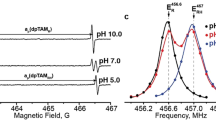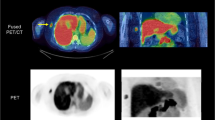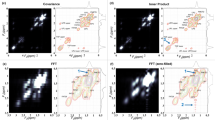Abstract
We have studied the metabolism of 31P-containing metabolites of post-menopausal breast cancers in vivo using magnetic resonance spectroscopy (MRS) and a 5.5 cm surface coil. Spectra were acquired from 23 diameter. The spectra of the 19 previously untreated tumours had significantly higher phosphomonoester (PME) 31P relative peak areas than the normal breasts of eight post-menopausal women (11.7% and 7.7% respectively, P = 0.002). Although an increased PME relative peak area was characteristic of malignancy, PME relative peak area is similarly raised in lactating breast and, therefore, not a specific feature of cancer. An apparently lower nucleotide triphosphate (NTP) relative peak area in tumours than healthy postmenopausal breast was secondary to the differences in PME relative peak area; contamination by signal from chest wall muscle probably accounts for the ostensibly higher phosphocreatine (PCr) relative peak area of the tumours. Spectroscopy was repeated following chemotherapy in six women. An increase in PCr relative peak area was seen in all five patients who responded, but again this may represent increased contamination secondary to changes in tumour size. A fall in PME relative peak area was noted in four responders, but also one non-responder, so this finding may not be sufficiently specific to be of use clinically. Further studies are need to elucidate fully the role of MRS in breast cancer.
This is a preview of subscription content, access via your institution
Access options
Subscribe to this journal
Receive 24 print issues and online access
$259.00 per year
only $10.79 per issue
Buy this article
- Purchase on Springer Link
- Instant access to full article PDF
Prices may be subject to local taxes which are calculated during checkout
Similar content being viewed by others
Author information
Authors and Affiliations
Rights and permissions
About this article
Cite this article
Twelves, C., Porter, D., Lowry, M. et al. Phosphorus-31 metabolism of post-menopausal breast cancer studied in vivo by magnetic resonance spectroscopy. Br J Cancer 69, 1151–1156 (1994). https://doi.org/10.1038/bjc.1994.226
Issue Date:
DOI: https://doi.org/10.1038/bjc.1994.226
This article is cited by
-
Detection of alterations in membrane metabolism during neoadjuvant chemotherapy in patients with breast cancer using phosphorus magnetic resonance spectroscopy at 7 Tesla
SpringerPlus (2014)
-
31P magnetic resonance spectroscopy of the breast and the influence of the menstrual cycle
Breast Cancer Research and Treatment (2014)



